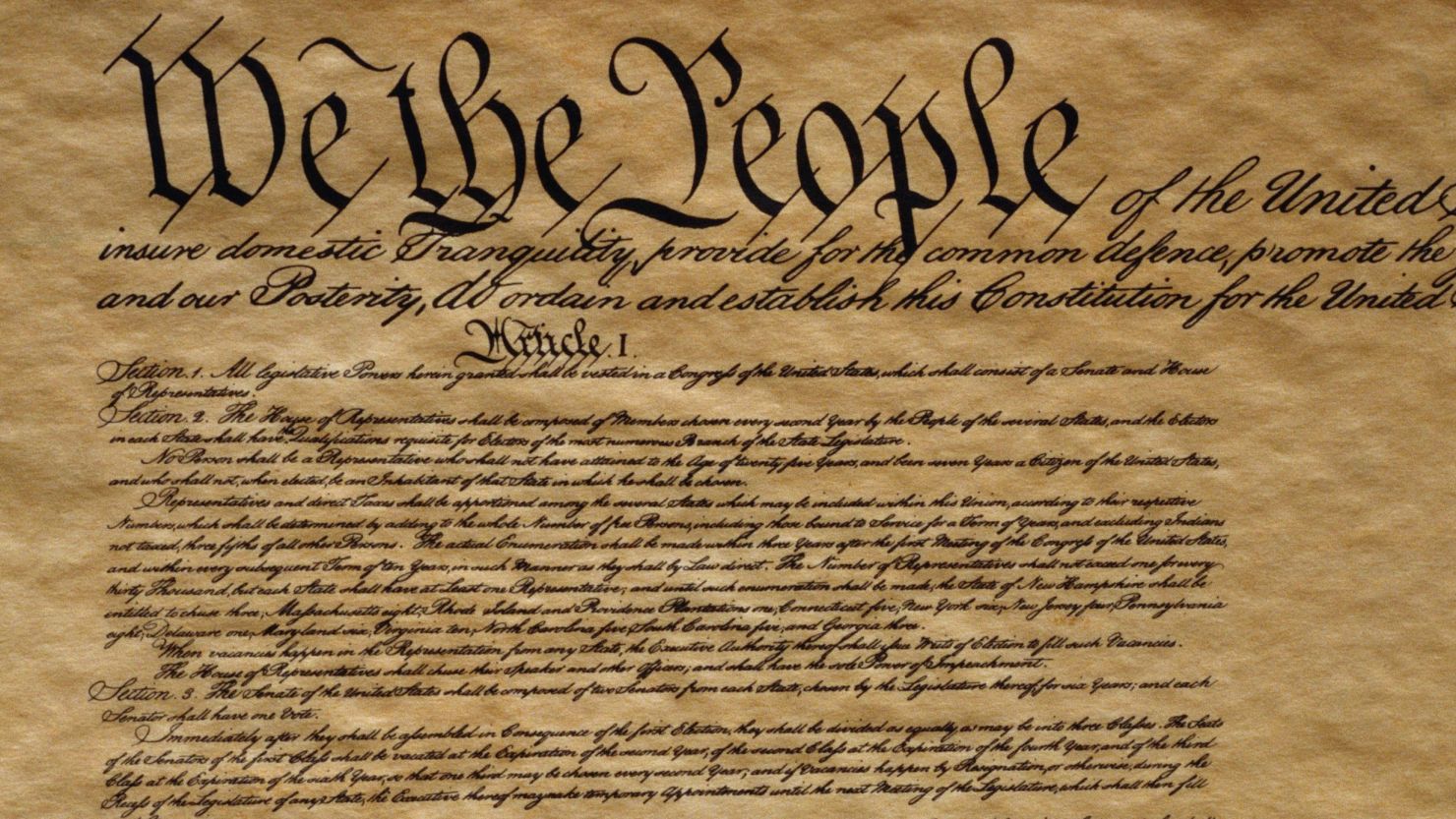
Why is the United States Constitution so important? The United States Constitution is the backbone of American democracy. Crafted in 1787, it established the framework for the federal government and outlined the rights of citizens. With just 4,543 words, this document has guided the nation for over two centuries. It introduced a system of checks and balances among the legislative, executive, and judicial branches, ensuring no single entity could dominate. The Bill of Rights, added in 1791, safeguarded individual freedoms like speech and religion. Its adaptability, through amendments, has allowed it to evolve with society, making it a living document that remains relevant today.
Key Takeaways:
- The Constitution, a cornerstone of American democracy, was drafted in 100 days by brilliant minds. It has been amended 27 times to reflect the evolving needs and values of American society.
- The Constitution established a federal system of government, with powers distributed among three branches. Its preservation and historical significance are celebrated on Constitution Day.
The Creation and Drafting of the Constitution
The United States Constitution is a cornerstone of American democracy. Its creation and drafting were monumental tasks that required the collaboration of some of the most brilliant minds of the time.
- The Constitution has 4,543 words, including the signatures but not the certificate on the interlineations. It takes about half an hour to read the entire document.
- The Constitutional Convention convened in Philadelphia on May 25, 1787, with the goal of revising the Articles of Confederation. However, the delegates decided to draft a new constitution instead. The convention lasted for 100 days, during which time the document was framed and finalized.
- On September 17, 1787, 39 out of 55 delegates signed the United States Constitution. The oldest signer was Benjamin Franklin at 81 years old, while the youngest was Jonathan Dayton from New Jersey at 26 years old.
- George Washington presided over the Constitutional Convention. His leadership and integrity played a crucial role in the success of the convention and the eventual signing of the Constitution.
- Notable delegates included Benjamin Franklin, Alexander Hamilton, and James Madison. These individuals were instrumental in shaping the Constitution and its provisions.
The Framework of Federalism
The Constitution established a federal system of government, distributing authority among three branches: legislative, executive, and judicial.
- The Constitution establishes a federal system of government, distributing authority among three branches: the legislative, executive, and judicial. The first three sections of the Constitution outline this framework.
- The assurance of a Bill of Rights played a pivotal role in securing the Constitution's ratification. James Madison proposed 15 amendments, of which Congress adopted 12 for submission to the states. Ten of these amendments were ratified by the states and incorporated into the Constitution as the Bill of Rights on December 15, 1791.
- Ratification of the Constitution was not done through direct popular vote but through special state conventions. The Constitution required the approval of nine states to go into effect. The first state to ratify was Delaware, followed by Pennsylvania, New Jersey, Georgia, Connecticut, Massachusetts, Maryland, South Carolina, New Hampshire, Virginia, and New York. North Carolina and Rhode Island ratified after Washington's inauguration.
- The greatest contests during the ratification process occurred in Massachusetts, Virginia, and New York. New York ratified by a majority of three votes (30 to 27), Massachusetts by 187 to 168, and Virginia by 89 to 79.
- During the ratification process, state conventions offered a total of 78 amendments, exclusive of Rhode Island's 21 and those demanded by the first convention in North Carolina. Professor Ames gives 124 as the whole number, inclusive of those of Rhode Island and North Carolina and the Bills of Rights.
Historical Significance and Preservation
The Constitution is not just a legal document but also a symbol of American democracy. Its historical significance and preservation are paramount.
- The first national Thanksgiving Day was proclaimed by President George Washington and a congressional resolution on November 26, 1789. This holiday was to give thanks for the new Constitution.
- When the Constitution was signed, the United States' population was approximately 4 million. Today, it is over 309 million. Philadelphia was the nation's largest city at that time with about 40,000 inhabitants.
- Since 1952, the Constitution has been on display in the National Archives Building in Washington, DC. The document is displayed behind protective glass framed with titanium. To preserve the parchment’s quality, the cases contain argon gas and are kept at 67 degrees Fahrenheit with a relative humidity of 40 percent.
- Constitution Day is celebrated on September 17, the anniversary of the day the framers signed the document. This day commemorates the signing of the Constitution and its significance in American history.
- The Constitution is not only a legal document but also a symbol of American democracy. It has been amended over the years to reflect the evolving needs and values of American society.
Powers and Rights
The Constitution delineates the powers of the federal and state governments and reserves certain rights for individuals.
- Enumerated federal powers include tax collection, war declaration, and trade regulation. Implied powers enable the government to address evolving national requirements.
- State powers encompass legislation on divorce, marriage, and education. The right to property ownership and trial by jury are reserved for individuals. Certain situations involve concurrent powers, enabling both federal and state governments to take action, with federal authority prevailing in case of conflict.
- The Supreme Court holds the ultimate authority in interpreting the Constitution and can nullify any law conflicting with its provisions.
- The original Constitution and the Bill of Rights are exhibited at the National Archives in Washington, DC.
- The Speaker of the House of Representatives is the second in line to the Presidency, after the Vice President, under the Presidential Succession Act of 1947.
Notable Absences and Contributions
Some key figures were absent from the Constitutional Convention, while others made significant contributions.
- Two Founding Fathers and future Presidents were not at the Constitutional Convention in 1787 and did not sign the Constitution. John Adams was ambassador to Great Britain, and Thomas Jefferson was ambassador to France.
- The Constitution provides for two senators from each state but does not set the size of the House. The number of Representatives is set by law and has been 435 since 1912.
- The original first amendment to the Constitution sought to deal with the issue of House representation but was never ratified by enough states to become part of the Constitution.
- The Constitution was placed with the Department of State in 1789 and stayed in its custody until 1921, when it was transferred to the Library of Congress. It was exhibited there from 1924 until 1954, when it came to the National Archives.
- An amendment can be proposed by a two-thirds majority in each house of Congress or by a national convention convened by Congress upon requests from two-thirds of state legislatures. For an amendment to be ratified, it requires approval either by three-fourths of state legislatures or conventions in three-fourths of states.
Amendments and Changes
The Constitution has been amended multiple times to reflect the changing needs and values of American society.
- Only one amendment to the Constitution has been repealed—the 18th Amendment, which prohibited alcohol. This amendment was repealed by the 21st Amendment in 1933.
- The Constitution contains a few spelling errors, with "Pensylvania" being one of the most notable. This error is above the signers' names.
- The Constitution was "penned" by Jacob Shallus, a Pennsylvania General Assembly clerk, for $30 (approximately $726 today).
- When the Constitution was signed, Benjamin Franklin needed help due to his poor health. As he signed, tears streamed down his face, symbolizing his emotional response to the significance of the document.
- Gouverneur Morris was largely responsible for the wording of the Constitution, although there was a Committee of Style formed in September 1787.
Interesting Tidbits
Here are some lesser-known but fascinating facts about the Constitution and its signers.
- Six men signed both the Declaration of Independence and the Constitution: George Read, Roger Sherman, Benjamin Franklin, Robert Morris, George Clymer, and James Wilson.
- The Constitution does not require that the Speaker of the House of Representatives be a member of the House, although a nonmember has never been chosen Speaker.
- The Constitution was drafted during a time of significant change in American history. The country was transitioning from a confederation to a federal system, and the document reflected this shift in governance.
- James Madison, often referred to as the "father of the Constitution," was the first to arrive in Philadelphia for the Constitutional Convention. He arrived in February, three months before the convention began, bearing the blueprint for the new Constitution.
- Edmund Randolph and George Mason of Virginia and Elbridge Gerry of Massachusetts refused to sign the Constitution due in part to the lack of a Bill of Rights.
Compromises and Controversies
The drafting and ratification of the Constitution involved several compromises and controversies.
- The Great Compromise saved the Constitutional Convention and probably the Union. Authored by Connecticut delegate Roger Sherman, it called for proportional representation in the House and one representative per state in the Senate (later changed to two).
- Patrick Henry was elected as a delegate to the Constitutional Convention but declined, saying he "smelt a rat" in the proceedings.
- Delegates from 12 of the 13 states attended the Constitutional Convention, with Rhode Island abstaining due to its reluctance to have a national government intervene in its affairs.
- The Constitutional Convention conducted clandestine sessions with guards stationed outside to ensure secrecy and facilitate open discussion among delegates.
- The Constitution has been amended 27 times since its adoption. These amendments cover various aspects including freedom of religion, the right to bear arms, fair trial rights, abolition of slavery, women’s suffrage, and presidential term limits.
Federal and State Relations
The Constitution establishes a balance between federal and state powers, ensuring that both levels of government can function effectively.
- Certain situations involve concurrent powers, enabling both federal and state governments to take action. In case of conflict, federal authority prevails.
- The Supreme Court holds the ultimate authority in interpreting the Constitution and can nullify any law conflicting with its provisions. This jurisdiction ensures that the Constitution remains the supreme law of the land.
- The Constitution has been preserved through various means, including its transfer from the Department of State to the Library of Congress and eventually to the National Archives. The document is now displayed in a specially designed case to maintain its quality.
- The Constitutional Convention lasted for 100 days, during which time the document was framed and finalized. This duration allowed for thorough deliberation and negotiation among the delegates.
- The Constitution is not just a legal document but also a symbol of American democracy. It has been amended over the years to reflect the evolving needs and values of American society.
Individual Rights and Protections
The Constitution reserves certain rights for individuals, ensuring their protection under the law.
- The Constitution establishes a balance between federal and state powers. The Tenth Amendment reserves powers to states or individuals, ensuring that state legislation on issues like divorce, marriage, and education is protected.
- The right to property ownership is reserved for individuals. This right is safeguarded by the Constitution to ensure that citizens have control over their personal property.
- The right to trial by jury is also reserved for individuals. This right ensures that citizens have the opportunity to be tried by a jury of their peers in criminal cases.
- An amendment can be proposed by a two-thirds majority in each house of Congress or by a national convention convened by Congress upon requests from two-thirds of state legislatures. For an amendment to be ratified, it requires approval either by three-fourths of state legislatures or conventions in three-fourths of states.
- The Constitution is a living document, meaning it has been amended over the years to reflect the changing needs and values of American society. This adaptability has allowed the Constitution to remain relevant and effective in governing the United States.
The Constitution's Lasting Impact
The United States Constitution stands as a cornerstone of American democracy. Its creation in 1787 marked a pivotal moment, transforming the nation from a loose confederation to a unified federal system. With only 4,543 words, it’s concise yet powerful, outlining the framework for governance and individual rights. The Bill of Rights, added in 1791, further cemented its importance by safeguarding fundamental freedoms. Over the years, 27 amendments have kept it relevant, reflecting societal changes. Displayed at the National Archives, this living document continues to guide and inspire. Its adaptability and enduring principles ensure it remains the supreme law of the land, balancing federal and state powers while protecting individual rights. The Constitution’s legacy is a testament to the foresight of the Founding Fathers and the enduring strength of American democracy.
Frequently Asked Questions
Was this page helpful?
Our commitment to delivering trustworthy and engaging content is at the heart of what we do. Each fact on our site is contributed by real users like you, bringing a wealth of diverse insights and information. To ensure the highest standards of accuracy and reliability, our dedicated editors meticulously review each submission. This process guarantees that the facts we share are not only fascinating but also credible. Trust in our commitment to quality and authenticity as you explore and learn with us.


